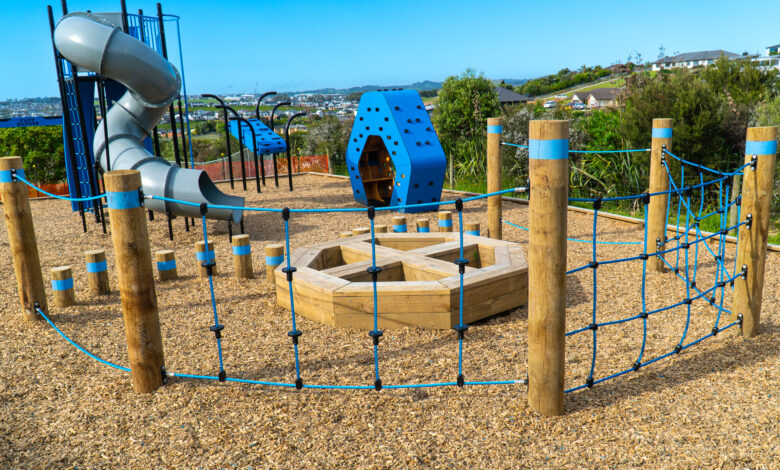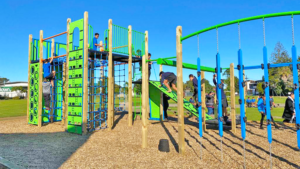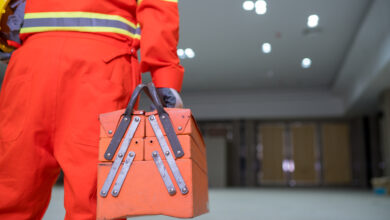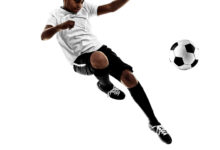Upgrade school playtime

Revamping your school playground has many benefits beyond aesthetic.
We all know the wellbeing wonders that come from outdoor play experiences and what better focus than the school playground for injecting more wellbeing-improving goodness to your environment.
Not sure where to begin?
Getting your students involved in playground upgrades – or an entirely new design when the time is right – must be one of the most fun projects that extends beyond the classroom! Let their imaginations run wild by evaluating features and additions they’d like to include.
However, a good place to start is getting an independent playground audit. These audits are carried out by a level 3 inspector who identifies and reports hazards in any play area. The report provides verification and assurance that all hazards and non-compliance’s are identified to the NZS5828:2015 standards. Once you have this report, you can break down what hazards need to be replaced, repaired, or upgraded.
Here are some additions you could consider, to give your playground an upgrade…
Game markings
An easy and affordable way to breathe new life into your playground is to add floor markings. You could go old school with this one, by adding hopscotch or snakes and ladders, to tempt kids to get moving. Or create sports court markings for some football or basketball fun. Exercise suggestions like ‘squat’ or ‘hop’ or observational ideas, such as ‘How many birds can you see?’ can add a new dimension to play time, in an age-appropriate context.
Surface upgrades
Tarmac and asphalt are no longer the go-to material for playground surfacing–a hard landing for any fall, these surfaces are unattractive as well as expensive to maintain and can create slip and trip hazards as they wear over time. More modern options that can give your playground a new look, a new level of safety and a better play experience.
Rubber or organic mulch is a popular soft-landing option that also adds an aesthetic lift to a play space—some mulch surfacing is made from recycled materials as well, which is particularly popular with sustainability focussed schools.
Another modern option is wet pour surfacing that can come in many customised colours and patterns. Artificial turf can add a different textural dimension, often used in specific high traffic areas of your playground. Rubber or organic mulch are other soft-landing options that can not only provide a soft landing but add an aesthetic lift to a play space. Paving can add a fresh feature and encourage children to go on journeys around the playground and its surrounds, while resin-bound gravel is robust and can provide a good mid-way option between hard and soft surfacing.
New places to sit and shelter
The social benefits of play cannot be overstated. A crucial aspect of child development, effective communication and social skills can be learned and encouraged through the provision of appropriate spaces for easy socialisation to take place. Create new covered areas with seating where children can sit, chat, eat, and play and it will bring new life to the school.
Hero play equipment
Adding a wow to your playground with a new piece of play equipment is an option if an entirely new playground isn’t on your school’s radar. A multi-purpose piece such as a climbing structure with various ascent and descent options will provide not only hours of fun, but stimulating challenges, confidence, and strength building opportunities.
Industry play perspectives
Different schools gravitate towards different playground designs, according to Park Supplies’ representative Leroy Brown: “A lot of design work comes from engaging with the children to prioritise activities they want in their playgrounds.”
“The usual staple items like slides, monkey bars and swings are always high up on the list for primary age, whereas senior students prefer height and climbing. We also take the opportunity to educate the children on what equipment is beneficial to developing strong bodies. For example, we teach children to see monkey bars as a way to develop posture, grip and upper body strength, which can then be carried over into multiple life skills like opening a jar, carrying their school bags, or climbing a ladder.
“A good thing to focus on with climbing structures is offering a variety of grips. We want the children to develop not only grip strength but also agility, co-ordination, and problem-solving skills. For example, a rock wall has a large open hand grip whereas a cargo net has a smaller 16mm rope diameter grip recruiting different muscles of the body.
“This works much the same way with body placement, typically the body is placed up close to a rock wall, stacking your weight, recruiting a lot of the smaller stabiliser muscles and using problem solving to scale. Climbing a cargo net allows a bit more freedom of movement and engaging more of the big prime movers. Both are highly important to overall development.”
“Playgrounds have changed dramatically over the last ten years, becoming more like assault courses that challenge kids of all ages and make the whole experience more fun,” explains Michael Klaja from ReHarvest Timber Products Limited.
A mulch playground surfacing specialist, Michael says: “It never ceases to amaze me that a discarded waste product dumped in the yard can be completely re-engineered into premium mulch we see cushioning the fall for children across the North Island.
“There is a feel-good component for everyone involved in the process, installing surfacing material made from recycling pallets that would have ended up in landfill, in round figures 100,000m3 that didn’t go it to the ground every year, that in itself is good news and resonates with schools passionate about sustainability.”










